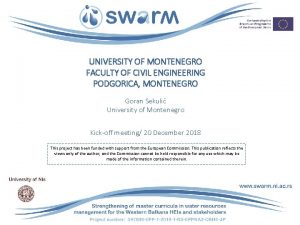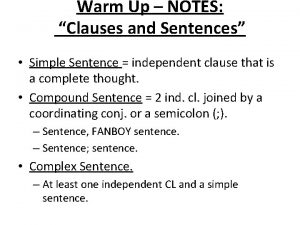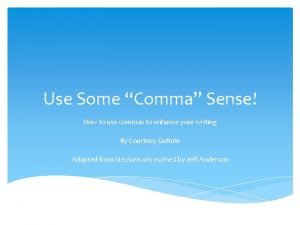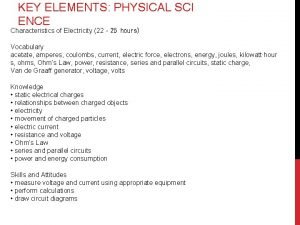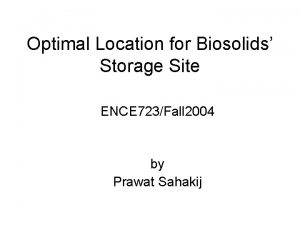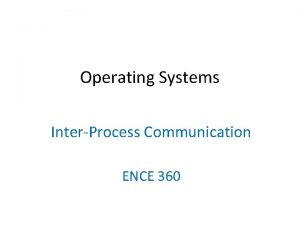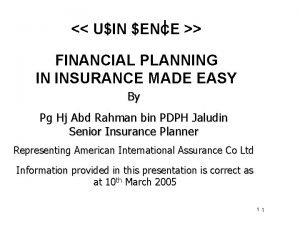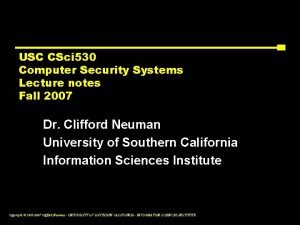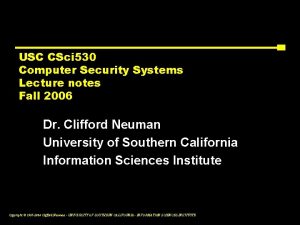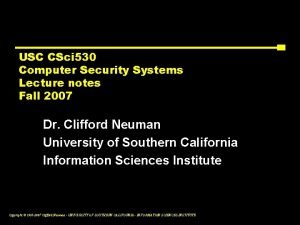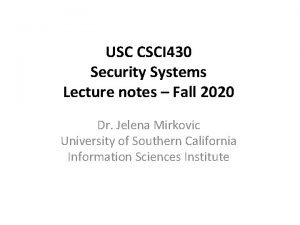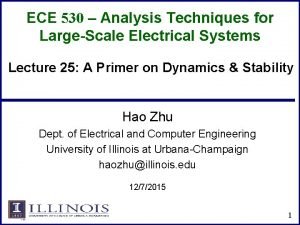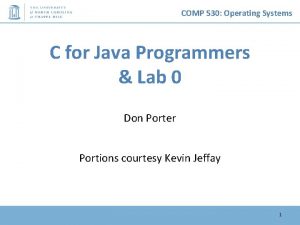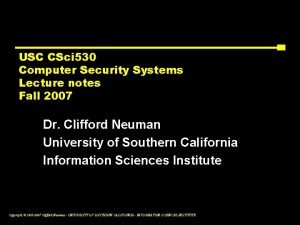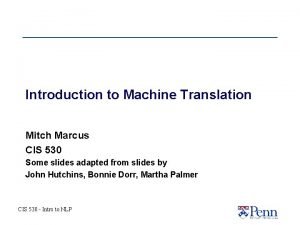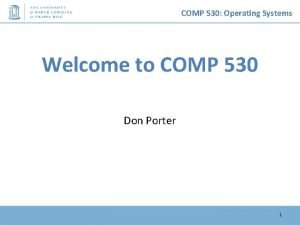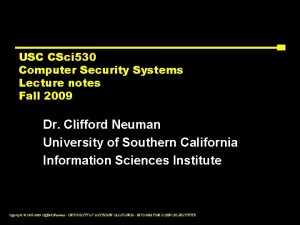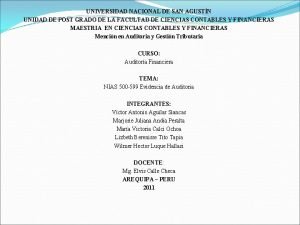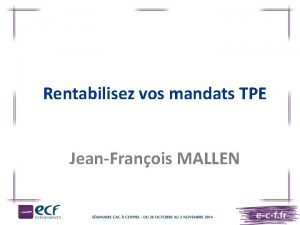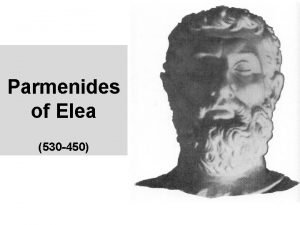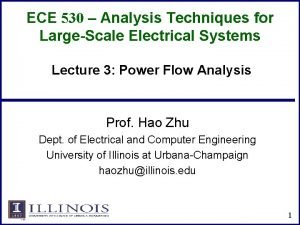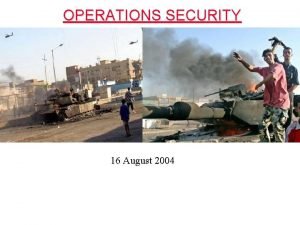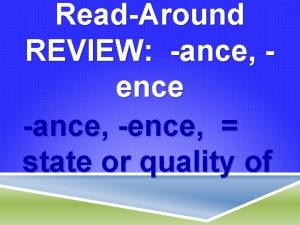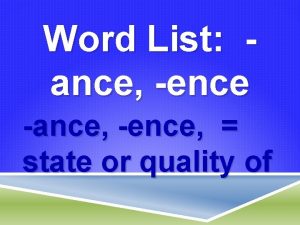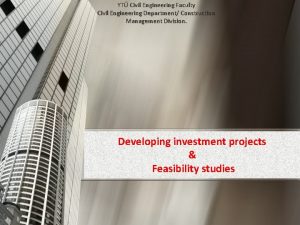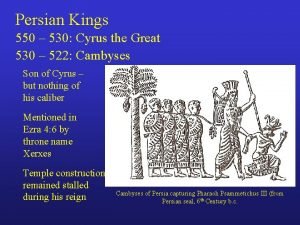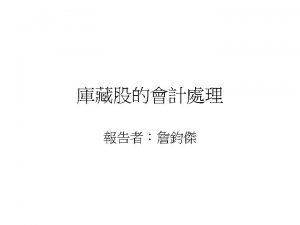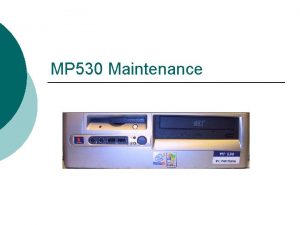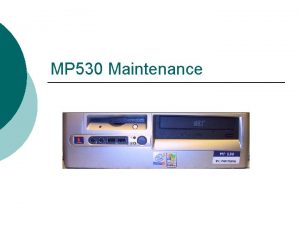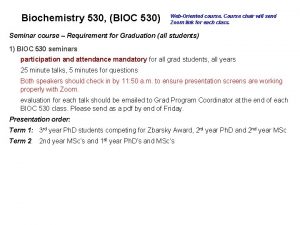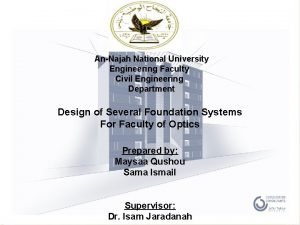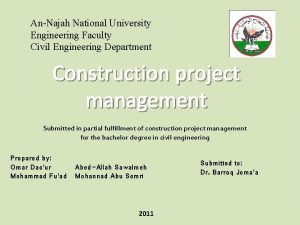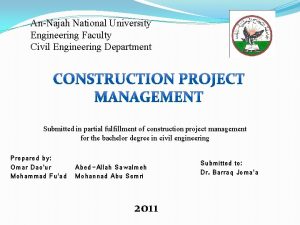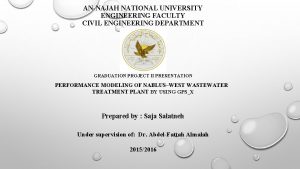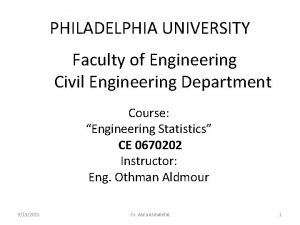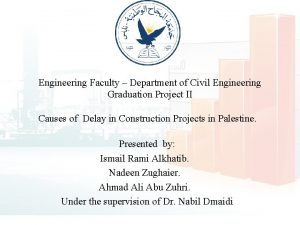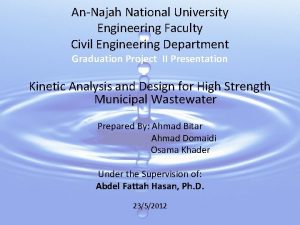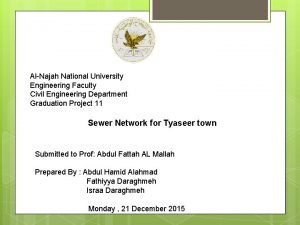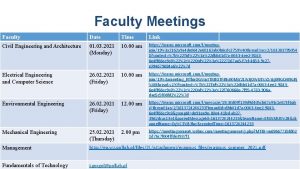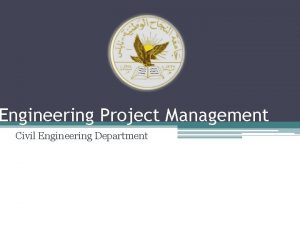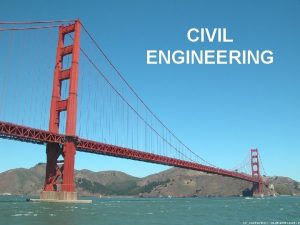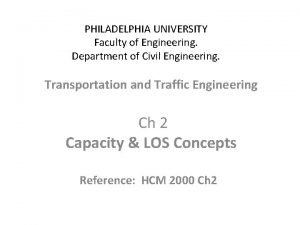Faculty of Engineering Civil Engineering Department ENCE 530



















![C=C˳[f + (1 -f) e^-kt] Trickling filter 1200 1000 COD(mg/L) 800 actual COD 600 C=C˳[f + (1 -f) e^-kt] Trickling filter 1200 1000 COD(mg/L) 800 actual COD 600](https://slidetodoc.com/presentation_image/260285e24b52f7bc0c417b5ddcdd9592/image-20.jpg)







- Slides: 27

Faculty of Engineering Civil Engineering Department ENCE 530 - G raduation project 2012 -2013

Olive Mill Waste Water Management By : Wala’ Abd Allah (1081023 ) Samar Salameen(1081315) Supervised by : Dr. Omar Zimmo

Introduction �In Palestine , the problem of untreated OMW discharge is urgent. �Several hundred thousands cubic meters of untreated W. W is discharged into open areas and cesspools. �The current project addresses this issue by relatively basic treatment scheme that can be implemented to olive mill sites for little cost with valuable end products.

Olive mill by product Olive oil Olive cake Olive mill waste water

Olive mill owners questionnaire � Main Objectives 1. Olive presses distribution according to operational status, and level of automation. 2. Quantity of olive mill waste production of jeft and zebar. 3. Number of employees and the mill working hour. 4. Olive pressing costs. 5. Coverage area of the mill and additional available area for construction a treatment plant. 6. Olive mill waste water management level.

Analysis of results �The majority of the olive-mills is located within the residential areas , land areas ranges between 170 -3000 sqm. � 38% of the olive mill has excess area around the facility. �The production of olive mills waste (zebar and jeft ) varied widely , due presence of other competitors and variation in the amount of pressed olives �None of the surveyed mills implement a management plane for OMWW.

Cont’d olive mill waste disposal method tight cesspits sewer system surveyed olive mill locations olive mill located in urban areas olive mill located in rural areas 11% 17% 83% 89%

OMWW characterizations The values of total nitrogen for various region The concentration of COD for various region 3000 2500 Total Nitrogen(mg/l) COD(mg/l) 200000 150000 100000 50000 2000 1500 1000 500 0 0 Beitrema Deristea Ellar Salfeet 1 Study region Salfeet 2 Nablus- Beitrema Deristea Ellar Salfeet 1 Region Salfeet 2 Nablus-

Fat Oil and Grease 90000 80000 70000 60000 50000 40000 30000 20000 10000 0 Beitrema Deristea Ellar Salfeet 1 Region Salfeet 2 Nablus- The values of Total dissolved solid for various region 100000 90000 80000 70000 60000 50000 40000 30000 20000 10000 0 Total suspended solid(mg/l) The values of Fat Oil and Grease for various region Beitrema Deristea Salfeet 2 Nablus- The value of p. H for various region 40000 35000 30000 25000 20000 15000 10000 5000 0 4. 85 4. 8 4. 75 p. H value Total suspended solid (mg/l) The values of Total suspended solid for various region Ellar Salfeet 1 Region 4. 7 4. 65 4. 6 4. 55 Beitrema Deristea Ellar Salfeet 1 Region Salfeet 2 Nablus- 4. 5 4. 45 Beitrema Deristea Ellar Salfeet 1 region Salfeet 2 Nablus-

Choice and laboratory scale evaluation of a biological treatment method for olive mill wastewater

OMWW proposed treatment process

Laboratory experimental setup �Phase I: physical treatment (gravel filter)

Phase II: Biological treatment �The performance of two systems had been evaluated : ü Trickling filter system. ü Activated sludge system

Activated sludge system

Trickling filter

Color removal

Composting

Analysis of results 100 Sand filter 90 80 removal efficiency % 70 60 50 40 30 20 10 0 0 1 2 3 4 Time (hr) 5 6 7 8 TSS removal efficiency vs. Time 9

Analysis of results Trickling filter Activated sludge system 1200 1000 800 COD(mg/l) 800 600 400 200 0 50 100 time(hr) 150 200 0 20 40 60 80 Time(hr) 100 120 140 160
![CCf 1 f ekt Trickling filter 1200 1000 CODmgL 800 actual COD 600 C=C˳[f + (1 -f) e^-kt] Trickling filter 1200 1000 COD(mg/L) 800 actual COD 600](https://slidetodoc.com/presentation_image/260285e24b52f7bc0c417b5ddcdd9592/image-20.jpg)
C=C˳[f + (1 -f) e^-kt] Trickling filter 1200 1000 COD(mg/L) 800 actual COD 600 COD removal model 400 200 0 0 50 100 Time (hr) 150 200 K = 0. 535 F 1 = 0. 249 F 2 = 0. 223 F 3= 0. 254

Cont’d Activated sludge system K= 0. 303814 F 1 = 0. 181005 F 2 = 0. 235416 F 3 = 0. 219805

Conclusion �Because the 3 -phase system the dominant method for olive oil extraction, very large amounts of liquid wastes is producing every season. �None the olive mills implement a management plane for OMWW. �This study shows olive mill waste was treated in circulating pond /T. F system, with a K=0. 535, or within the activated sludge system with K=0. 304. this suggesting strong treatment feasibility.

�T. F/recirculating pond system found to be more applicable in the olive mill, this is because of low operating cost, low labor skill requirement. �the treatment of mill waste stream can be carried out at rural site by separation of the liquid from the solid, solid is to be composted and the liquid to be treated by a recirculating pond and trickling filter system.

The proposed OMW treatment plant

Recommendations �The olive mill waste disposal problem has two levels, the management level and the other is the technical level. �A well management plan has to be established, focusing on the following points: �cooperation between authorities , have to be achieved in a manner to enforce OMWW treatment before discharge it �Providing training courses for the farmer and the olive mill owner , to increase the level of awareness of the significant impact of the problem

�The back washing of the gravel filter is hard and high water consuming process. � The phytotoxicity of the treated OMWW has to be determined precisely to grantee the Consistency with the Palestinians standard for irrigation water. � The olive washing water could be screened and then used in the treatment plant for dilution purposes. �Initial Feasibility study of the project must be established. Also centralized decentralized treatment option must be considered.

Thank You Any questions ? !
 Faculty of civil engineering ctu prague
Faculty of civil engineering ctu prague Civil engineering faculty
Civil engineering faculty Aaawwubbis chart
Aaawwubbis chart Simple sentence notes
Simple sentence notes Comma causers
Comma causers Ence electric
Ence electric Ence storage
Ence storage Ence pipes
Ence pipes Easy for ence
Easy for ence Nit calicut chemistry department
Nit calicut chemistry department Civil rights webquest
Civil rights webquest Csci 530
Csci 530 Csci 530
Csci 530 Csci 530 security systems
Csci 530 security systems Csci 430
Csci 430 Ece 530
Ece 530 Comp 530
Comp 530 Bioc 530
Bioc 530 Csci 530 usc
Csci 530 usc Cis 530 upenn
Cis 530 upenn Comp 530
Comp 530 Usc csci 530
Usc csci 530 Nia 500 evidencia de auditoría
Nia 500 evidencia de auditoría Nep 315
Nep 315 Principle of non contradiction
Principle of non contradiction Ece 530
Ece 530 Ece 530
Ece 530 Ar 530-1
Ar 530-1

